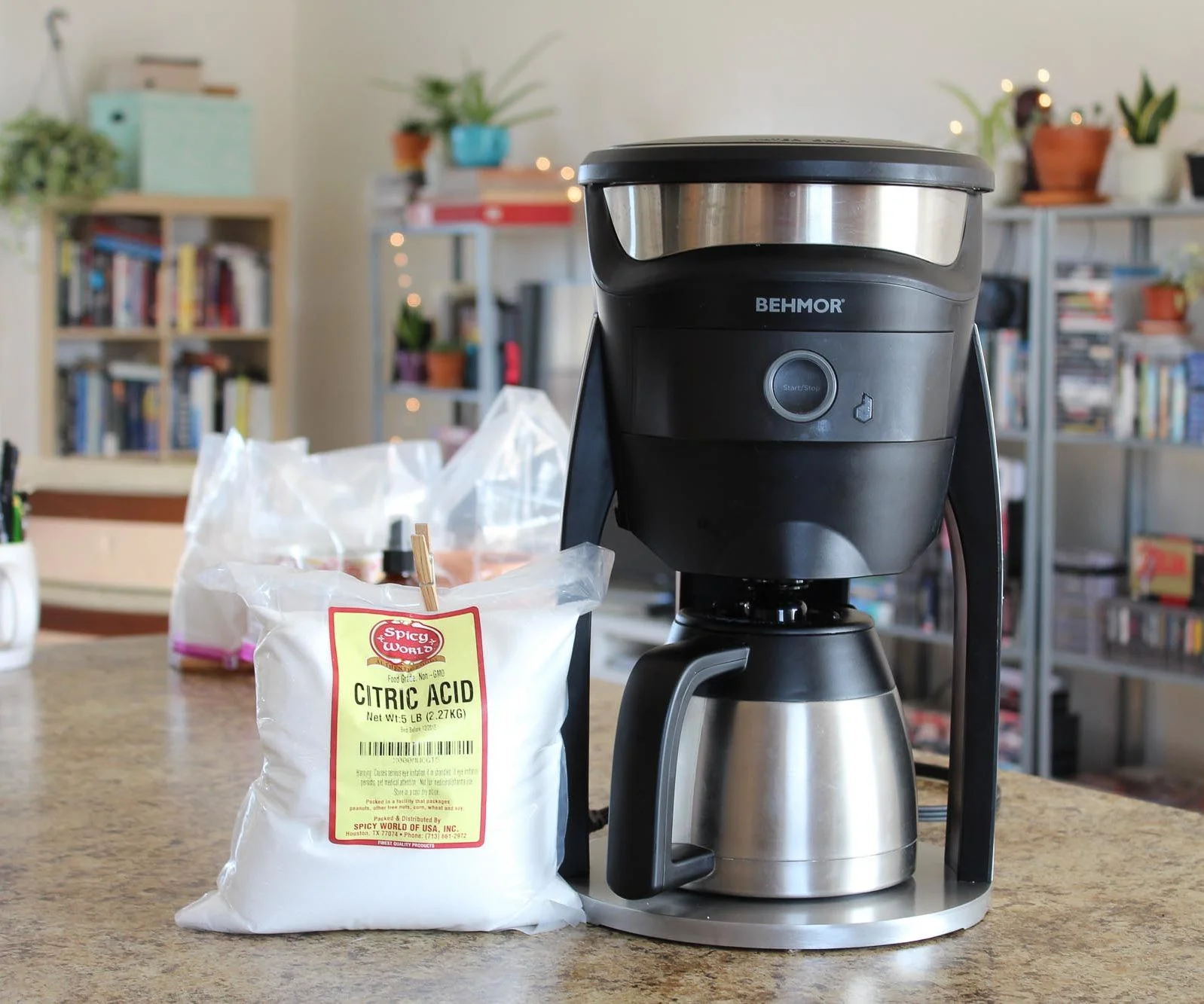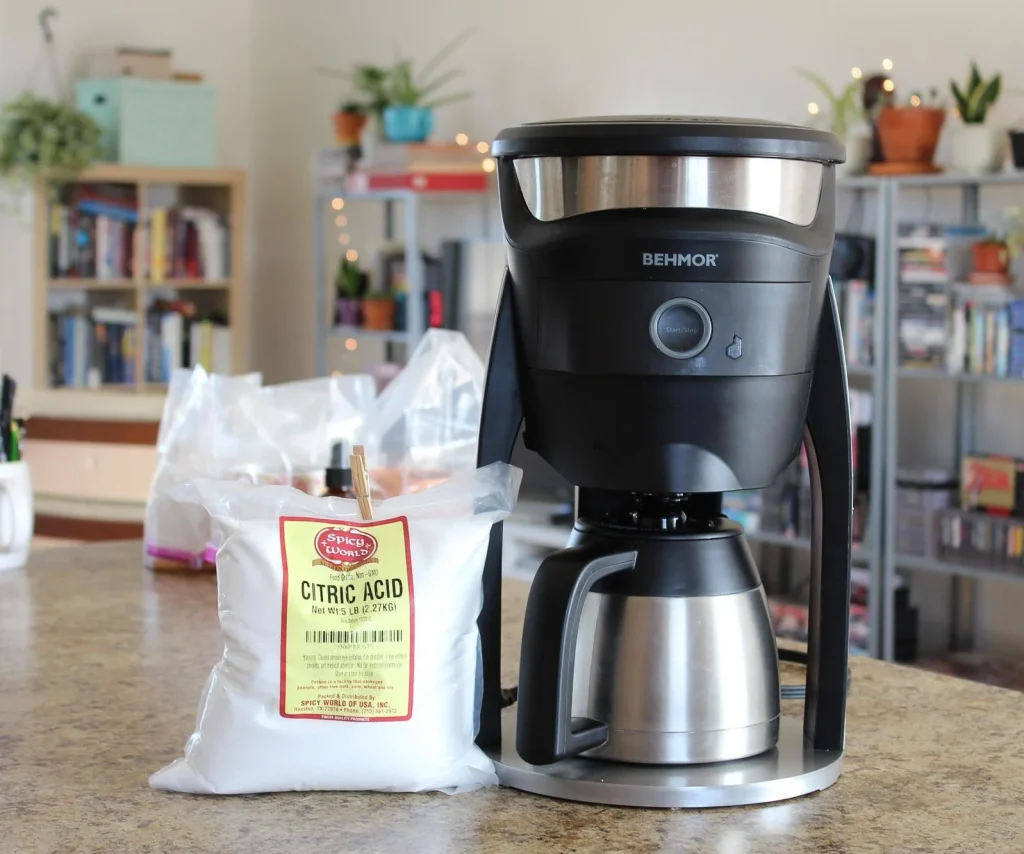
If your morning cup doesn’t taste as bright as it used to, lime and mineral buildup (limescale) is often the culprit.
Descaling regularly keeps machines running well and your coffee tasting fresh. This guide shows a gentle, natural method using
citric acid plus a splash of vinegar — safe, effective, and simple enough to do in under 30 minutes.
Why descaling matters (and signs your machine needs it)
Over time minerals from tap water collect inside boilers, heating elements and water lines. That leads to:
- Longer brew times or inconsistent temperature
- Sour or metallic flavors in your coffee
- Loud gurgling or poor water flow
If you notice any of the above, don’t panic — descaling is normal maintenance. Using citric acid + a little vinegar clears stubborn scale without harsh chemicals, and it’s safe for most drip, single-serve, and pod machines when done correctly.
What you’ll need
- Citric acid powder — food grade (2–3 tablespoons)
- White distilled vinegar — just a splash (1–2 tablespoons)
- Fresh, cold water (about 1–1.5 liters / 34–50 fl oz depending on machine capacity)
- A heat-safe bowl or container (for soaking removable parts)
- A clean cloth or paper towel
Why citric acid? It’s a gentle but powerful descaler that dissolves mineral deposits without leaving a lingering vinegar taste. The small amount of vinegar helps break down heavier deposits and boosts cleaning power.
Quick compatibility check (before you start)
Most drip machines, single-serve (Keurig, Nespresso-style), and many pod machines are fine with this method. However:
- Check your manufacturer’s manual if your machine is under warranty or explicitly disallows vinegar/citric acid descaling.
- For espresso machines with internal steam boilers or delicate components, follow the manufacturer’s descaling procedure (some high-end machines want a specific solution).
How to descale your coffee maker — step-by-step (citric acid + vinegar)
- Empty the machine: Remove pods, filters, and empty the water reservoir. Turn off and unplug the machine for safety.
- Make the descaling solution: In a jug, dissolve 2 tablespoons of food-grade citric acid in about 1 liter (34 fl oz) of warm water. Add 1 tablespoon of white distilled vinegar and stir until dissolved. (If your reservoir is larger, use 3 tbsp citric acid + 1.5 L water + 2 tbsp vinegar.)
- Fill and run one cycle (drip / full reservoir machines): Pour the solution into the water reservoir. Start a brew cycle as if making coffee but without coffee grounds. Let the machine run until about half the reservoir is used, then pause (if your model allows) and let it sit for 10–15 minutes to let the solution soften scale.
- Complete the cycle: Finish the brew cycle and discard the descaling liquid. For single-serve pod machines, run the solution through as if brewing a pod — you may need to repeat depending on buildup.
- Rinse cycles (important): Refill the reservoir with fresh cold water only and run 2–3 full cycles (or until you can’t detect vinegar smell). This removes any citric residue and vinegar traces.
- Soak removable parts: While you ran the cleaning cycles, soak the carafe, filter basket, and removable lids in warm water with 1 teaspoon of citric acid for 10–15 minutes, then rinse and dry.
- Final wipe & test: Wipe exterior surfaces and run one final water-only cycle. Brew a small pot of coffee and check flavor. It should taste clean and brighter — if not, run one more fresh water cycle.
Total time: roughly 25–45 minutes depending on pause times and machine size. Most importantly — don’t rush the rinse cycles.

Special tips for different machine types
Drip coffee makers (standard 8–12 cup)
Follow the steps above. If you have a permanent filter, remove and soak it separately. For large reservoirs, scale solution volumes proportionally (3 tbsp citric acid for 1.5 L).
Single-serve pod machines (Keurig, Nespresso-style)
Use small-volume cycles: run the citric solution through using the largest cup size, pause for 10 minutes, then complete. Repeat rinse cycles as needed. Never put citric solution in pods — run it through the machine water path only.
Espresso machines & machines with steam boilers
Espresso machines can be sensitive. If your manual requires a commercial descaler, follow that. If the manual allows citric/vinegar, use a weaker solution (1 tbsp citric + 1 L water + 1 tsp vinegar) and avoid getting solution into steam wands — flush thoroughly.
Maintenance schedule — how often to descale
- Hard water areas: Every 1–2 months
- Moderate hardness: Every 3 months
- Soft water or filtered water: Every 6 months
Tip: pour a small glass of cold water from the reservoir and taste it. If it tastes mineral or “off”, it’s time to descale.
Troubleshooting & common questions
My machine still gurgles after descaling — what now?
Run two additional water-only cycles. Loud gurgles usually mean trapped air or partially dissolved scale; extra rinses help flush it out. If gurgling persists, check the manual for valve clearing steps.
I can taste vinegar after rinsing — how do I remove it?
Keep rinsing with fresh water cycles — it will dissipate after 2–3 rinses. If flavor remains, brew and discard one pot of plain coffee to help neutralize any residual taste.
Is citric acid safe for all coffee machines?
Citric acid is generally safe and widely recommended for home descaling. Avoid using it on machines that explicitly instruct against it in the manual (rare). For vintage or high-end commercial machines, follow manufacturer recommendations.
What to do with used citric solution
The used solution contains dissolved minerals and should be poured down the drain and rinsed with water. It’s safe for household plumbing in normal quantities.
Internal resources & further reading
For more appliance tips and reviews, check our Kitchen Appliances Guide and our Reviews section for coffee makers and related accessories.
Disclosure: This page provides general maintenance tips. Always consult your appliance manual before using any cleaning solution or method.


